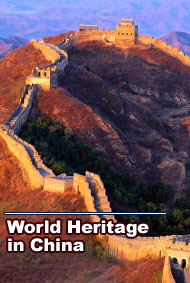
|
|
|
Chinese paper-cut
In the Ming (1368-1644) and Qing (1644-1911) dynasties, Yangzhou papercuts enhanced the decorative features combining appreciation and usage together. It can be used both as decoration for women and children, sample patterns for embroidery, a model for cutting shoe decorations, pillow decorations, table cloth decorations and bed sheet decorations. It can be used for ceremonial decorations in the folk customs like festival patterns, happy ceremony patterns, door laces, light decorations and dragon boat decorations. Folk papercut craftsmen cut various patterns for wealth and good luck with a knife and some Xuan paper. Yangzhou papercuts are delicate in shape with thin, flowing lines. An experienced folk artist can clip out a flower, bird or beast with a lifelike reality in just a few minutes, using just a pair of scissors and a piece of blank paper. Ⅵ. Thin Line Papercuts in Yueqing Declarer:Yueqing City,Zhejiang Province Thin line paper-cuts, a distinctive genre of Chinese papercuts, originated from Yueqing, Zhejiang Province. Different from the plain and bold northern style, Yueqing thin line paper-cuts feature a delicate and exquisite style and a rich southern Chinese charm. The dragon boat lantern is a local unique Yueqing craft. Dragon lantern celebrations are held in every village during the Chinese spring festival. Dragon lanterns of various styles are hung on dragon boats to ward off evil and pray for blessings. Aside from lanterns, thin line papercuts in different patterns also appear on dragon boats. Competitions are also held to select the best dragon boat lanterns. The key criterion is whether the thin line papercuts on a dragon boat are exquisitely made. Craftsmen pay attention to not only the delicateness of the paper cuts but also the diversity of their patterns. . After years of development, thin line papercuts now feature various patterns, including flowers, birds and beasts, theatrical figures, legends and landscapes. The thin line papercut requires soft, thin paper. Artists engrave patterns and figures on soft paper with a steel knife. Usually, four knives with different blazes are needed to complete any artwork. Artists usually polish knives by themselves so that they can come up with their own techniques and strengths. As 10 to 20 pieces of paper are usually pressed together before being cut, the knives must be sharp. |